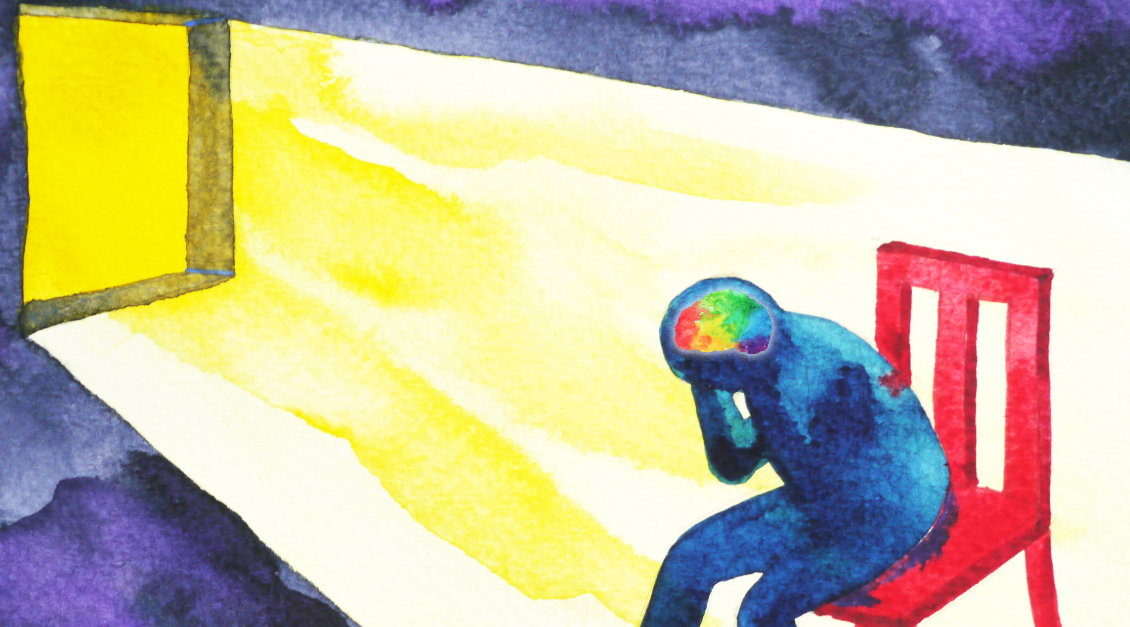
The hyperacute schizophrenic patient
In this section
The hyperacute patient or highly acute patient, is a schizophrenic patient who has a high level of positive symptoms (PANSS total score >115; very severely ill1), is potentially hostile and aggressive, with no insight, coming with ambulance and potentially police to be hospitalized.2,3 The patient will be distressed with dysfunctional behaviour and may be a danger to him/herself and others.2 They may be irritable, perplexed, agitated, hostile, violent as well as paranoid and suspicious about the motives of others.2 Hyperacute patients, before being admitted to hospital, can often become progressively more agitated, angry, verbally aggressive at home and unable to control rage outbreaks.3 Treatment of these patients is a medical emergency where urgent assessment and action is needed.2
Studies have found various predictors of aggression in schizophrenia; developmental and prenatal factors, various neurocognitive factors such as executive function deficits, comorbid personality disorders are among these predictors.4 Factors such as insufficient social support, substance abuse, and symptom exacerbations are also responsible.5 If schizophrenia patients are not treated properly, the risk for aggression increases.4
Schizophrenia patients who are paranoid can often show impulsivity and aggressive behaviour, which is seemingly related to a “failure of behavioural filtering outside of consciousness”.5 During an acute episode of psychosis, where delusions and hallucinations are prominent, suspiciousness and hostility may appear, and could further escalate to aggressive behaviour.5 Patients with a thought disorder or persecutory delusion who perceive themselves as threatened are especially at risk for aggression.5
Highly acute patients are very often not aware that they are ill and require treatment, therefore they are without insight.2 A lack of insight, along with thought disorder can lead to a poorer control of aggressive impulses.5 The patient will require inpatient management, and it may be necessary to admit him/her involuntarily by invoking legal procedures.2
Assessment of impulsivity and aggression
It is ideal to meet in a place that is safe for the clinician as well as the patient.5 A quiet room allows for collaboration between the patient and the clinician and could potentially minimize the need for invasive interventions.5 It is important to take a clinical history as much as possible, to try to gauge whether a patient will become violent or aggressive.5 Self-report questionnaires and several tests of cognitive ability such as the Hostility Scale and Acute Psychiatric Rating Scale can help assess dysfunctional impulsivity.5 The risk factors for aggression can be characterized into 4 variables:5
Demographic or personal: history of violence, violent threats, history of child abuse
Clinical: diagnosis, severity of symptoms, treatment compliance
Situational: social support, availability of weapons
Physician: protective: good patient-doctor relationship, endangering: cognitive bias of the evaluator5
Clinical management of aggression
The multidimensional aetiology of aggression can make treatment decisions difficult.5 There is a need to manage psychosis, poor impulse control, personality traits and potential comorbid substance abuse.5 Pharmacological interventions are necessary and it can be challenging for the clinician to administer the maximum dose and at the same time not harm the patient.5 The patient may need an intramuscular injection if they refuse to take a pill and may need to be held down against their will to be given the injection.5 They often need to be monitored 1-on-1 in a closed acute psychiatric ward until they become less aggressive and respond to treatment.6 Vital signs should be monitored, and close observation should be provided for at least 24 hours to assess agitation.5 There can be adverse events which occur from sedative medications, and there may be a need to administer multiple medications in the hyperacute phase.5 Typical antipsychotics, especially haloperidol, have a long and safe history when given as an intramuscular injection.5 Atypical antipsychotics, such as olanzapine and risperidone may decrease hostility over the long term and have a lower risk of acute extrapyramidal and cardiovascular adverse effects.5 Those for which intramuscular formulations are available are favoured.5
Aggression in numbers
Studies have found that “acute psychosis is a consistent risk factor for the occurrence of violence; approximately 10% of patients diagnosed with schizophrenia display assaultive behaviour within 2 weeks before hospital admission”.7 Moreover, “20% to 30% of patients who display psychotic symptoms engage in threats, verbal aggression, and property damage within the same period.7 Once hospitalized, 10% to 15% of these patients become physically assaultive, and 30% to 35% engage in fear-inducing behaviours”.7 “More than 50% of patients hospitalized for a first episode of schizophrenia who had threatened others had displayed overt signs of illness for over a year” and “after discharge, there is an increase of violence risk: aggressions committed by persons with schizophrenia often occur within the first few months of hospital discharge”.5
When dealing with hyperacute patients the “best way to reduce the risk of aggression is with adequate treatment of schizophrenia”.5 It is important to assess a patient’s agitation/hostility to help make the best treatment decisions. Staff that have been properly trained can ensure the safety of patients, as well as themselves.5
References
- Leucht S, Kane JM, Kissling W, Hamann J, Etschel E, E. R. What does the PANSS mean? Schizophr. Res. 79, 231–238 (2005).
- Keks, N. et al. The acutely psychotic patient Assessment and initial management. Aust. Fam. Physician 35, (2006).
- Gobbi, G. et al. What is a recommended treatment for aggression in a patient with schizophrenia? J Psychiatry Neurosci. 28, 320 (2003).
- Serper, M. R. Aggression in Schizophrenia. Schizophr Bull. 37, 897–898 (2011).
- Pompili, M. et al. Aggression and Impulsivity in Schizophrenia. Psychiatr. Times 32, (2015).
- Ulrich, R. S., Bogren, L., Gardiner, S. K. & Lundin, S. Psychiatric ward design can reduce aggressive behavior. J. Environ. Psychol. 57, 53–66 (2018).
- Robinson, L. at al. Managing aggression in schizophrenia. J. Am. Psychiatr. Nurses Assoc. 5, S9–S16 (1999).
OUR PRODUCT IN ACUTE SCHIZOPHRENIA
Once the diagnosis of schizophrenia is made, clinicians, patients, and families have important treatment decisions to make. Although it seems intuitive to say t
more…PREDICTING OUTCOMES IN PSYCHOSIS
Novel tools to predict outcomes of psychosis management were discussed in this session at the 29th EPA Virtual congress
more…


